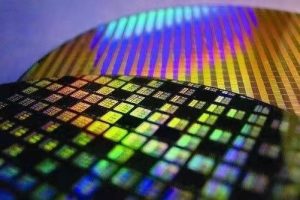LED light emitting diode chip material
LED is an abbreviation taken from the three words Light Emitting Diode, a light emitting diode is an electronic device that can convert electrical energy into light energy and has the characteristics of a diode. At present, different light-emitting diodes can emit light of different wavelengths from infrared to blue, and light-emitting diodes that emit purple or even ultraviolet light have also been born. In addition, there are white LEDs that coat phosphors on blue LEDs to convert blue light into white light.

LED color and process:
Different materials for making LEDs can produce photons with different energies, so that the wavelength of light emitted by the LED can be controlled, that is, the spectrum or color.
The material used in the first LED in history is arsenic (As) gallium (Ga), its forward PN junction voltage drop (VF, which can be understood as lighting or working voltage) is 1.424V, and the light emitted is infrared spectrum .
Another commonly used LED material is gallium (P) phosphide (Ga), its forward PN junction voltage drop is 2.261V, and the light emitted is green. Based on these two materials,
the early LED industry used the GaAs1-xPx material structure, which can theoretically produce LEDs with any wavelength from infrared light to green light.
The subscript X represents the percentage of phosphorus replaced by arsenic. Generally, the wavelength and color of the LED can be determined by the voltage drop of the PN junction. Typical ones are red LEDs of GaAs0.6P0.4, orange LEDs of GaAs0.35P0.65, yellow LEDs of GaAs0.14P0.86, etc. Because gallium, arsenic, and phosphorus are used in the manufacture, these LEDs are commonly known as three-element light-emitting tubes. GaN (gallium nitride) blue LEDs, GaP green LEDs and GaAs infrared LEDs are called two-element light-emitting tubes. At present, the latest technology is a four-element LED made of AlGaInN four-element material mixed with four elements of aluminum (Al), calcium (Ca), indium (In) and nitrogen (N), which can cover all visible light and some ultraviolet light. The spectral range of light.
| Luminescent material | Epitaxy | Gap type | Luminous color | center wavelength | Die Brightness | drive current | forward voltage | |
| Emitting layer Substrate | λp(nm) | Iv(Mcd) | If(mA) | Vf(v) | ||||
| GaAsP | GaAs | VPE+diffusion | direct | Red/R/1 | 655 | 0.5~0.8 | 5~30 | 1.7 |
| Gap | GaP | LPE | indirect | Red/H/5 | 700 | 2.0~3.5 | 5~15 | 2.2 |
| GaAsP | GaP | VPE+diffusion | indirect | Orange/E/4 | 630 | 5.0~12.0 | 5~30 | 2.1 |
| GaAsP | GaP | VPE+diffusion | indirect | Amber/A | 620 | 3.0~8.0 | 5~30 | 2.1 |
| GaAsP | GaP | VPE+diffusion | indirect | Yellow/Y/3 | 585 | 4.0~9.0 | 5~30 | 2.2 |
| Gap | GaP | LPE | indirect | Green/YG/2 | 570 | 6.0~13.0 | 5~30 | 2.2 |
| Gap | GaP | LPE | indirect | Green/SG | 565 | 3.0~8.0 | 5~30 | 2.2 |
| Gap | GaP | LPE | indirect | Green/PG | 555 | 1.0~2.5 | 5~30 | 2.2 |
| GaAlAs | GaAs | LPE(SH) | direct | Red/S/6 | 660 | 6.0~10.0 | 5~30 | 1.8 |
| GaAlAs | GaAlAs | LPE(DH) | direct | red/D | 660 | 10.0~25.0 | 5~30 | 1.9 |
| GaAlAs | GaAlAs | LPE(DDH) | direct | red/F | 660 | 20.0~40.0 | 5~30 | 2.1 |
| AlGaInP | GaAs | MOVPE+DBR | direct | Orange/J2 | 620 | 70~90 | 5~30 | 2.1 |
| AlGaInP | GaAs | MOVPE+DBR | direct | Orange/J3 | 630 | 50~70 | 5~30 | 2.1 |
| AlGaInP | GaAs | MOVPE+DBR | direct | Amber/J5 | 610 | 70~90 | 5~30 | 2.1 |
| AlGaInP | GaAs | MOVPE+DBR | direct | Green/G3 | 570 | 20~30 | 5~30 | 2.3 |
| AlGaInP | GaAs | MOVPE+DBR | direct | yellow/K2 | 588 | 50~80 | 5~30 | 2.1 |
| AlGaInP | GaAs | MOVPE+DBR | direct | Yellow/K3 | 595 | 50~80 | 5~30 | 2.1 |
| GaN | Sapphire | MOVPE | direct | blue green/G5 | 505 | 30~50 | 5~30 | 3.0~3.5 |
| GaN | Sapphire | MOVPE | direct | Blue-green/G6 | 525 | 30~50 | 5~30 | 3.0~3.5 |
| GaN | Sic | MOVPE | direct | Blue/B1 | 470 | 15~20 | 5~30 | 3.2~3.6 |
| GaN | Sapphire | MOVPE | direct | Blue/B3, 4 | 470 | 20~40 | 5~30 | 3.0~3.6 |
Ps.
1. Direct energy gap: The range of lattice constant X<0.49 is called direct energy gap, and the luminous efficiency is higher.
2. Indirect energy gap: The range of lattice constant X>0.49 is called indirect energy gap.
It is forbidden to use the above content without the authorization of the author, and the reprint must note the source of this content reprint or the consent of Queendom












